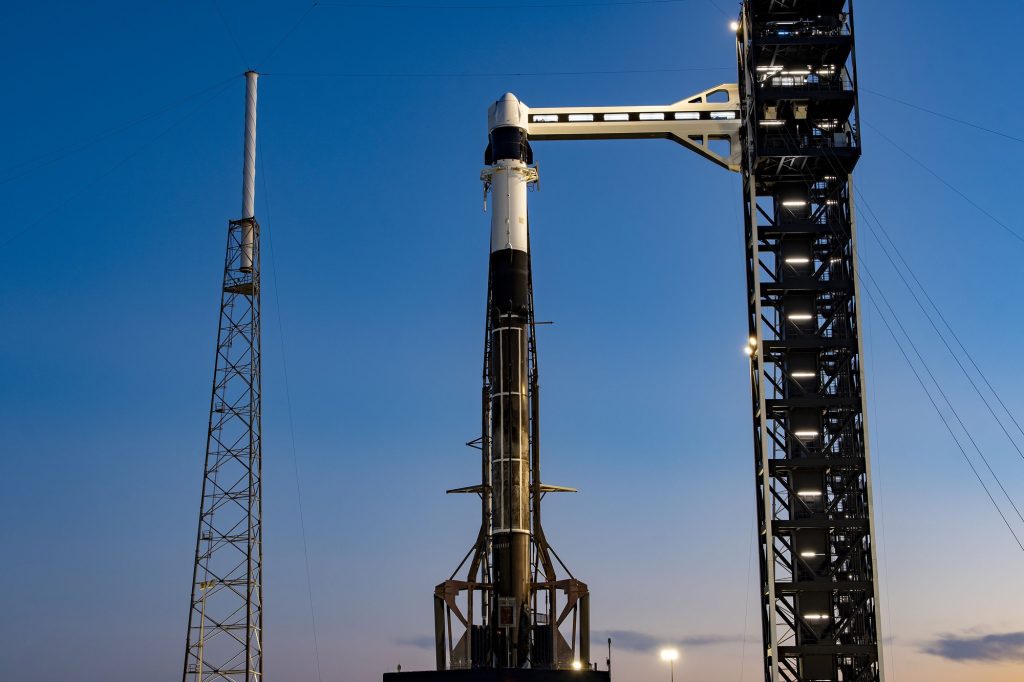A cargo spacecraft headed to the International Space Station on March 21, after a rare last-minute cancelation of a Russian Soyuz spacecraft launch to the station.
A Falcon 9 took off from Cape Canaveral’s Space Launch Complex (SLC) 40 at 4:55 p.m. Eastern. The rocket’s payload, a cargo Dragon spacecraft, separated from the Falcon’s upper stage 12 minutes after liftoff.
The Dragon is on the CRS-30 mission to the ISS and is set to dock with the station at about 7:30 a.m. Eastern on March 23, staying there for about a month. The spacecraft is transporting 2,841 kilograms of cargo, including a mix of science experiments, crew supplies and station hardware.
This is the first time that the current version of Dragon has launched from SLC-40. SpaceX has been using nearby Launch Complex 39A for launches of Crew Dragon spacecraft and its cargo variant, utilizing the launch tower and crew access arm there. The last cargo flight from SLC-40 was CRS-20, the final launch of the original cargo version of Dragon, in March 2020.
SpaceX has since constructed a tower at SLC-40 that enables that pad to be used for cargo missions again as well as, in the future, crewed missions. For cargo missions, the crew access arm allows for late loading of time-sensitive cargo about 24 hours before launch.
The new tower at SLC-40 is “nearly functionally identical” to LC-39A, said Sarah Walker, director of Dragon mission management at SpaceX, during a March 19 briefing. The elevator at the new pad is upgraded compared to the one at LC-39A and has a different emergency escape system than the “slide wire” baskets at the older pad. SLC-40 instead uses chutes that can quickly unfurl for people to slide down.
SpaceX built the tower at SLC-40 to serve as a backup to LC-39A, reducing congestion at the pads such as in February, when the launch of the IM-1 lunar lander mission from LC-39A delayed NASA’s Crew-8 commercial crew mission from the same pad by more than a week. It also provides redundancy in case one pad is damaged.
Walker said there were no definite plans yet to launch a crewed mission from SLC-40 as SpaceX collaborates with NASA to complete paperwork to certify use of the pad for NASA commercial crew missions. “They’re on-track to be pencils-down on that for NASA crewed missions ahead of Crew-9, but we’ll move over to SLC-40 when we need to for the manifest.”
Soyuz delay
The CRS-30 launch was originally planned to be the second mission to the ISS to launch on March 21. Roscosmos had scheduled the launch of the Soyuz MS-25 mission on a Soyuz-2.1a rocket at 9:21 a.m. Eastern.
However, the launch countdown was stopped just 20 seconds before liftoff. NASA initially had no details about what caused the hold that canceled the launch, and soon ended TV coverage of the launch attempt.
Roscosmos, in a Russian-language statement posted on a social media account several hours later, attributed the cancelation to “a voltage drop in the chemical current source,” but did not provide further information. It said the next launch opportunity is March 23 at 8:36 a.m. Eastern. NASA said in its coverage of the cancelation that a launch on March 23 would result in a docking two days later; the original plan was for the spacecraft to dock just three hours after a March 21 launch
NASA stated later that day that the launch was canceled because of a low voltage reading in the electrical system of the Soyuz rocket. This seems to be the first time a Soyuz mission with crew on board was stopped during the final stages of its countdown.
Soyuz MS-25 is taking NASA astronaut Tracy C. Dyson, who is headed to the station for a six-month visit, along with Roscosmos cosmonaut Oleg Novitskiy and a Belarusian guest cosmonaut, Marina Vasilevskaya. Novitskiy and Vasilevskaya will return about 10 days after docking on Soyuz MS-24 with NASA astronaut Loral O’Hara, who is finishing a six-month stay on the ISS. Roscosmos cosmonauts Oleg Kononenko and Nikolai Chub, who flew to the ISS last September with O’Hara on Soyuz MS-24, will stay on the station for an additional six months.









